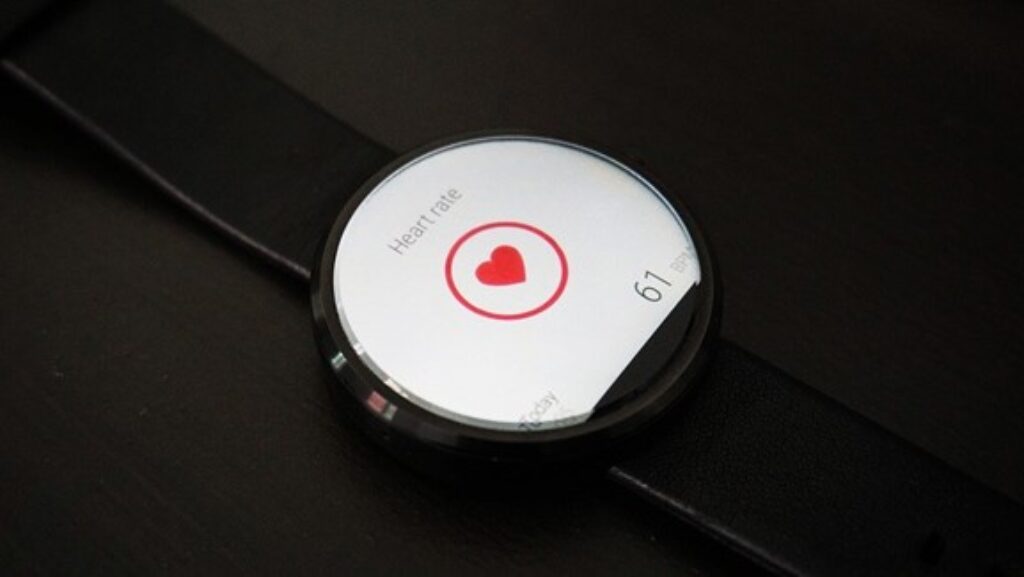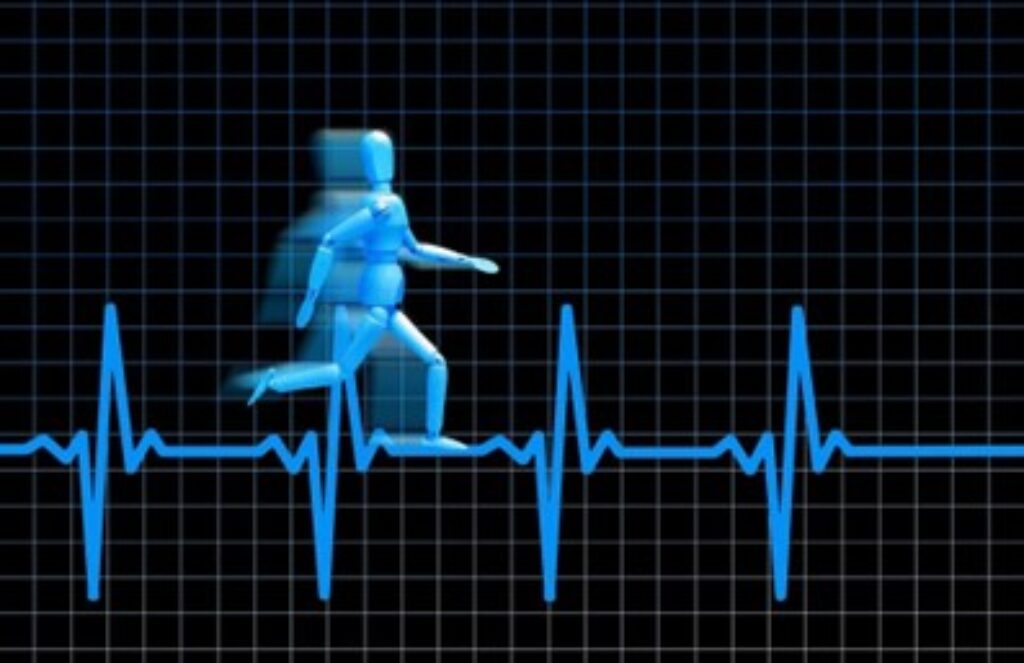
With about one in five US citizens using a fitness tracker or a smartwatch, people are becoming more inclined to keep track of their heart rates, which is the number of times your heart beats per minute. Today, heart rate monitoring is increasingly common to monitor physical activity and measure exercise intensity, which signifies how hard your body is working while you exercise.
Many people rely on measuring their heart rate to gauge their current fitness levels and determine the exercise intensity they need to reach to fulfill their weight loss or fitness goals. But how does it work exactly, and does measuring your heart rate matter when it comes to exercise intensity?
Let’s find out!
Elevate your workouts with the power of a pulse oximeter medical grade and cardio mobile devices – stay motivated and stay on track to reach new heights of fitness success. Achieve game-changing results with cutting-edge technology like the Polar Verity Sense and portable oxygen concentrators – your fitness journey just got a whole lot easier.
Unleash your full potential with the latest biofeedback devices and wearables to track your progress and crush your fitness goals!
Find motivation and encouragement with game-changing results from your cardio mobile device. Your fitness goals are within reach!
- Calorie Counter
- Sleep monitoring
- Step Counter
- Multi-Sport Mode
- App function
Transform your workout routine with the latest pulse oximeter and heart rate monitor watch technology. Get ready to dominate your fitness journey!
Unleash the power of biofeedback devices and wearables to level up your fitness game!
The Role of Your Heart Rate in Measuring Exercise Intensity
The human body has a unique, in-built system to measure its exercise intensity cap – the heart. Your heart rate will increase as the intensity of your exercise increases. You can track and guide your exercise intensity by computing your Target Heart Rate (THR) range.
For instance, for a moderate-intensity workout, an individual’s THR needs to be 50 to 70 percent of their maximum heart rate, which is based on your age. The ideal method to find your maximum heart rate is to undergo an exercise stress test at your doctor’s, in which you will run on a treadmill at a gradually increasing fast pace while a machine monitors your heart activity. The test goes on until you can’t run any faster, experience severe shortness of breath, or develop an abnormal heart rhythm, which is a sign that your heart has reached its capacity.
However, if you can’t go for a stress test or don’t have access to one, you can calculate an estimate of your maximum heart rate by subtracting your age from 220 beats per minute (bpm). However, since it’s the maximum heart rate average for people your age, you must use it with caution during high-intensity exercises. You can use a heart rate monitor to keep track of your heart rate during your exercise routine. It’s easier and more convenient than taking your pulse.

How to Measure Your Heart Rate by Taking Your Pulse
If you don’t have a heart rate monitor, you can take your pulse at regular intervals during your exercise routine to know whether you are exercising within your target heart rate range or not. Make sure to take your pulse before you warm up and after you’ve been exercising for about 5-10 minutes.
Here’s how you can measure your pulse:
- Put the first three fingers of your right hand on the inner wrist of your left hand just below your thumb.
- Lightly press the fingers into the hollow close to the tendon on your thumb-side.
- Count your pulse for 15 seconds by using a watch. Multiply this figure by four to get your beats per minute.
Alternatively, you can take your pulse by lightly pressing your fingers against one of the carotid arteries that you can find on either side of your windpipe.
Seek Medical Advice Regarding your Target Heart Rate
If you are over the age of forty, have a medical condition, are overweight or obese, or haven’t exercised in a long time, it’s best if you see a doctor for a medical check-up before taking up any new exercise program. They will professionally calculate your target heart rate range while keeping your specific health condition and fitness level in mind.
Moreover, some medicines can alter your heart rate response to exercise. So, don’t forget to discuss any medication you’re taking and how it can affect your workout plans in thorough detail in your doctor. If you are taking certain medicines, it might be best if you monitor your exercise intensity by other methods.
Factors that Affect Your Heart Rate
Apart from exercising, there are a number of different internal and external factors that can affect your heart rate, including:
- Medicines
- Stress or anxiety
- Hot weather
- Caffeine intake
- Hormonal fluctuations
- Smoking
- Time of the day

Heart Rate Recommendations to Improve Fitness
Tracking your heart rate can help you lose weight or improve your exercise performance, as heart rate is an excellent measure of exercise intensity. The American Heart Association (AHA) deems 50% to 85% of your maximum heart rate to be the target heart rate zone, which will maximize the benefit of your workout. Individuals trying to lose weight should keep their target heart rate zone between 70% and 85% of their maximum heart.
Moreover, 50-55% of your maximum heart rate is considered to donate light exercise, 70% is considered to moderate, while 85% is considered vigorous. Studies have also associated various heart rate zones with specific fitness results.
For instance, there is a designated range in which individuals tend to burn more fat-derived calories. This fat-burning zone lies within 59% to 76% of your maximum heart rate, which consequently aligns with moderate-intensity workouts. When your heart rate goes beyond this level, you continue to burn calories, but they are more carbohydrate-derived calories than fat-derived ones.
Typical Responses to Moderate-Intensity Exercises
Your body’s typical responses to moderate-intensity exercise include:
- Quicker breathing
- Faster heart rate
- Feeling warmer
- Mild to moderate perspiration
- Slight swelling of the hands and feet
- Mild muscular aches for a day or two after the workout, if you’re not used to physical activity
Once you become aware of the intensity level of your workout, you can work toward achieving your fitness goals with the right exercise intensity. Ideally, moderate-intensity workouts are the best for maximum health benefits as high-intensity workouts can cause certain health issues in some individuals, while low-intensity workouts will not help you burn calories quickly.

Why Is Above 85% of Your Maximum Heart Rate Unsafe?
So why is a high-intensity workout in which you surpass 85% of your maximum heart rate risky? It’s because it can increase the risk of a cardiovascular attack. What’s more is that the more intense your workout is, the longer it will take for your body to recover its regular levels of oxygen and go back to its normal heart rate.
This effect is called excessive post-exercise oxygen consumption (EPOC) or the after-burn effect. When your body is in this state, it keeps burning calories, even after the end of your exercise session. Even though there is no determined heart rate threshold that guarantees the afterburn effect, research suggests that the higher your heart rate is during exercise, the likelier your chances are of experiencing the afterburn effect.
With that said, it’s still unsafe for the general population to exercise so intensely that their heart rate spikes to more than 85% of their maximum heart rate. It’s because when your heart rate is so high, the risks of exercising increase excessively when compared to its benefits.
According to a scientific statement, the dangers of high-intensity exercise for individuals who are not used to it include an increased risk of atrial fibrillation (a heart rhythm disorder), sudden cardiac arrest, and heart attack.
The best way to exercise for the uninitiated is to let your heart rate rise increasingly by warming up and boosting the intensity of your workout over time. In fact, it’s better to keep your heart rate at the lower end of the recommended range for your age. Instead of pushing your body, gradually boost the intensity and length of your workouts to promote your fitness goals and maintain good heart health. Make sure your heart rate is in the lower ranges during warm-up and cool-down periods of your workout.
Let’s take a look at some warning signs of a high-intensity workout.

Warning Signs of High-Intensity Workouts Gone Wrong
If you experience any of the following signs, stop exercising and seek medical help right away:
- Extreme, persistent breathlessness
- Continued breathing problems, such as coughing or wheezing
- Chest pain or pressure
- Fainting or dizziness
- Extreme perspiration
- Nausea
- Severe muscle pain or cramps
- Extreme and long-lasting fatigue after working out
You should also keep your fitness coach in the loop so that they can guide you toward a beneficial exercise regime with the right intensity for sustained fitness goals. Also, don’t follow a workout so intense that you start experiencing the aforementioned troublesome signs.
Not Everyone Needs to Track Their Heart Rate during Intense Workouts
If you don’t have specific weight loss goals or you don’t want to focus on improving your performance at a given exercise routine, you shouldn’t worry yourself about tracking your heart rate while working out. Similarly, if you’re not plagued with any health issues, you don’t particularly need to track your heart rate. It’s especially true for people whose resting heart rate is normal and who have no heart-related problems.
Moreover, if you want to track your fitness level and progress but don’t have a heart monitor or smartwatch, you can try other methods for measuring exercise intensity.

Other Methods to Measure Your Exercise Intensity
If for some reason, you cannot measure your exercise intensity by calculating your heart rate, or you don’t feel the need to measure it, you can consider the following methods to keep track of your exercise intensity:
1. The Talk Test
It’s a simple and reliable method to measure your exercise intensity. As a rule of thumb, if you can talk and sing without puffing at all while exercising, you are working out at a low intensity. If you can talk comfortably but are having difficulty singing or are unable to sing, you’re working out at a moderate level. Lastly, if you can’t say more than a few words without gasping for air, you’re certainly exercising at a high intensity.
2. Exertion Rating Scale
This method is rooted in observing your body’s physical signs of exertion during physical activity. These signs include increased sweating, heart rate, breathing, and muscle fatigue. To ensure that you are within the moderate-intensity range, make sure that you are not sweating profusely, gasping for air, or feeling utterly exhausted. If that’s the case, then you should lessen the intensity of your workout.
You can keep track of your exertion ratings by jotting them down in a journal. It will help you monitor your fitness progression. As you become fitter, you will realize that the same activity will become easier on your body, and your exertion rating will decrease. This way, you can increase your exercise intensity when needed. Even though you can use the aforementioned ways to measure exercise intensity, the more accurate way to measure it is by keeping track of your heart rate. It’s the ideal method for anyone with a heart condition or other medical issues that require them to keep track of their heart rate at all times. It can also help you gauge just how much you need to push your body to reach your target heart rate range to see changes in your body and fitness levels.

Tips to Implement an Overall Healthy Exercise Routine
Here are some tips that you can use to maintain a healthy exercise routine without worrying about pushing your heart rate to the brink:
- Always warm-up before your exercise routine by performing your exercise at a slower pace. It will allow your heart rate to rise gradually and give your body the chance to adjust to the exercise intensity.
- For any exercise you take up, start with the easiest possible iteration of it. For instance, if you want to start walking, try walking on a level surface for 4 to 6 weeks, then push yourself and walk uphill. Next, you can start jogging and partaking in more vigorous activities, as long as you don’t experience warning symptoms, such as lightheadedness, shortness of breath, and chest pain.
- Gradually increase the time you spend on each exercise from five to ten minutes in the beginning and build up slowly to your target time.
- When environmental conditions get worse, such as high humidity or high altitude, lower the intensity of your workout to account for the greater strain on your heart.
- Always cool down after your exercise routine by walking or exercising at a slower pace to let your heart rate return to normal.
The Bottom Line
To sum it up, many people focus on their heart rate as the primary indicator for exercise intensity. It helps them focus on their fitness goals and push themselves to make headway in their weight loss journey.
However, when you focus too intently on the numbers, you can lose sight of what your body is trying to tell you. It’s why if you want to measure your heart rate to improve your fitness level, you must be respectful toward your body and listen to it when it tells you to lower your exercise intensity. This way, you will learn to find the right exercise intensity for your body on any given day!


